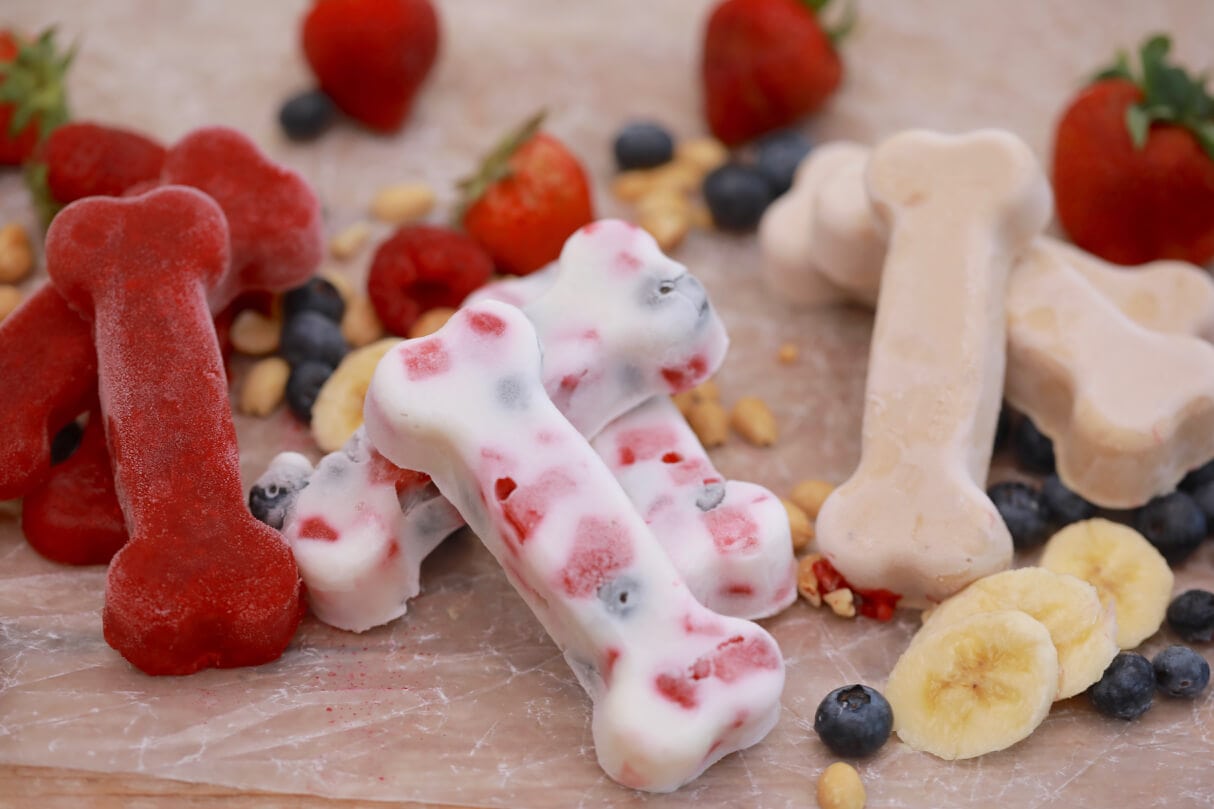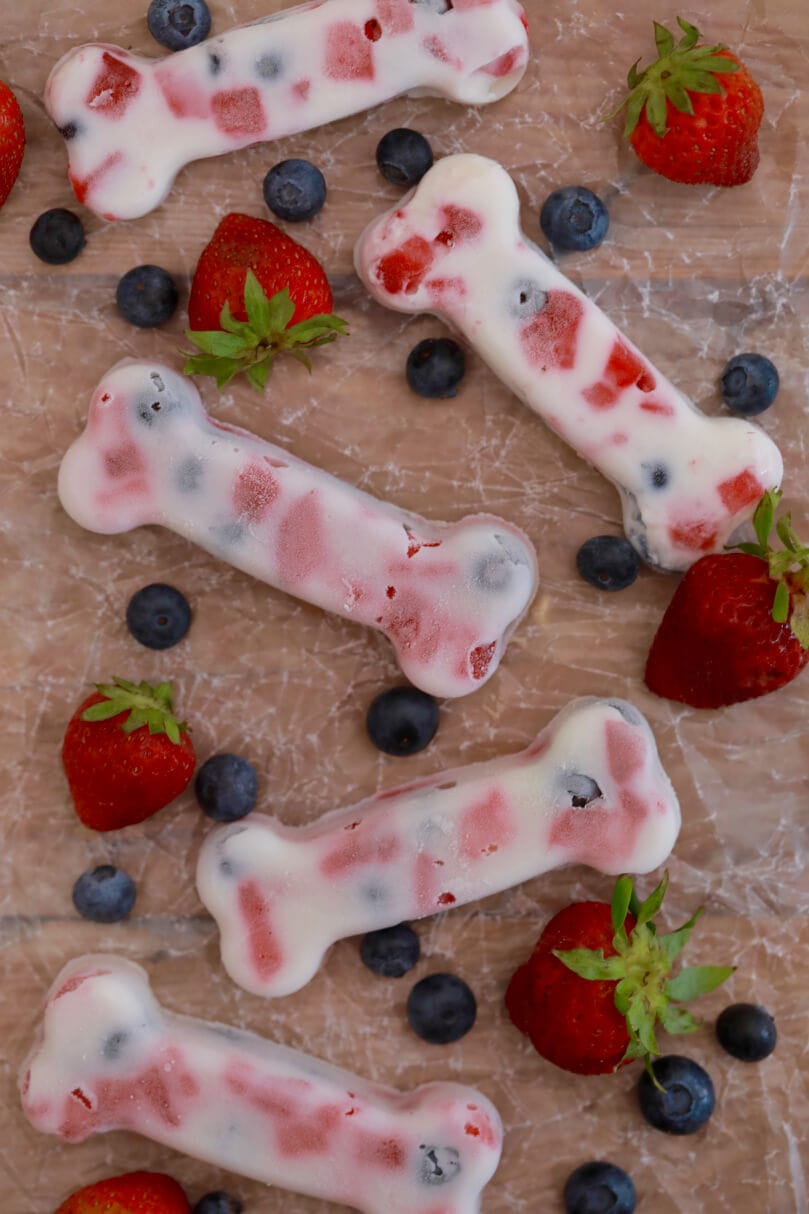
This post may contain affiliate links. Please see my full disclosure for details.
Hi Bold Bakers!
Those of you who have pets can probably agree, making wholesome food for your best friends is just as fun and satisfying as sharing homemade treats with your friends and family! With this in mind I’ve whipped up 3 incredible homemade dog treats!
I am a huge animal and dog lover! I grew up in Ireland with dogs and since moving to California, Kevin and I have been proud owners of the world’s sweetest pup, Waffles! My dog Waffles is a 4 year old, Terrier Lhasa Apso mix. We rescued him 3 years ago from a great facility here in Los Angeles called NKLA. This organization rescues dogs from high kill areas and gives them a better chance of survival and a better chance at finding their forever home. We are so grateful to have him!

This recipe for Yogurt and Berries Dog Treats features all natural ingredients you probably already have around. Who would have known tangy yogurt and fresh seasonal berries could be combined to make the simplest doggy treats? To be honest, it sounds like my favorite breakfast…
You will love making these but more importantly you pets will go crazy for them! Not only will your pups love the taste of these frozen dog treats but they actually have loads of health benefits for your dog. The main ingredient in these treats, yogurt, does wonders for dogs.
High in calcium and protein, yogurts with active bacteria can act as a probiotic and are good for your dog’s digestive system just as they are for you As far as the berries, just as they are superfoods for us they pack a punch for your pets! All the antioxidants and fiber boast the same benefits for your dog’s body.
I cannot wait for you to give this recipe a go. I love the thought of all my Bold Bakers sharing something homemade with their pups! Enjoy!

This is not my dog Waffles’ first rodeo. Watch Waffles and I making Ice Cream for Dogs! And get more Homemade Dog Treats!
Buy the Dog Bone Mold I used for these recipes on Amazon.com!
Watch The Recipe Video!
Yogurt and Berries Dog Treats Recipe
Ingredients
- 1 cup (8oz/120g) plain yogurt
- 10 strawberries , diced
- 20 blueberries
Instructions
- In your dog treat mold or ice cube tray scatter in your strawberries and blueberries.
- Spoon over the yogurt. Fill evenly and smooth the top.
- Tap on the counter to ensure there are no air bubbles and the mixture is evenly distributed.
- Freeze for a minimum of 5 hours or overnight.
- To remove tap on the counter to loosen then turn out. If you have any trouble, quickly run the mold under warm water to help the treats release then turn out.
- Store in the freezer for up to 3 months.







I would eat these!
Hi Gemma,
I love your recipes and want to try this on.Can you suggest what brand of yogurt is good or the one you used..Mostly all yogurts say sugar in table content
Hi Gemma! Just checking in to see how you are doing with the infant, hubby and pup!! Hope you are all safe and happy! I know you must be exhausted, although you would never know because you’re so kind to be sharing your recipes and tips with all of us!! I’ve been sending links to my friends who have kids who have to manage working at home, kids barging into meetings..hahaha..I love when they do that! Anyway, the kids are loving the pet recipes, and all the fun being little Bigger Bolder Bakers! xoxo
Can you use bananas
Can u use blueberry Greek yogurt only
Can I give these to cats?
Can my dog eat this? She has a milk allergy?
I am trying to freeze dry the treats and they are too powdery. What can I add to make the treats more stable? I am thinking of tapioca flour/starch; is it ok for dogs without it being cooked? Any other ideas? Thank you.
Cool those look really heathy for dogs
U r from Ireland, wonderfully greatgrandparents came from there. Wish I could just go and visit for about 2 weeks. Thank you cousin.